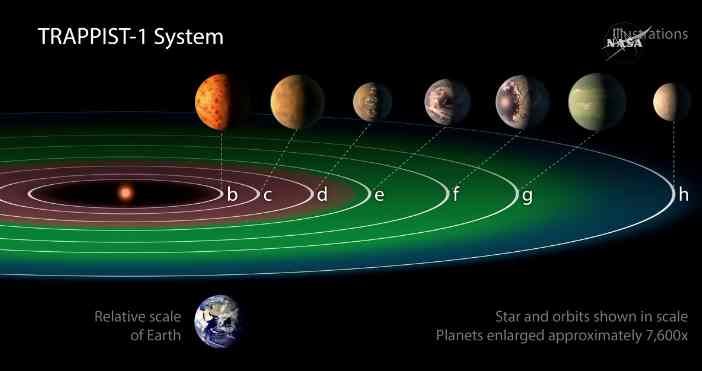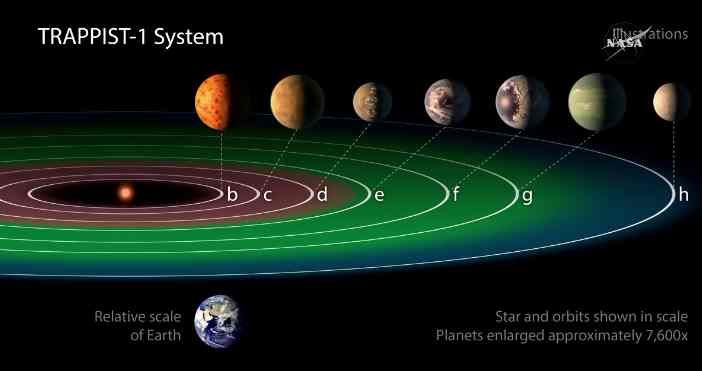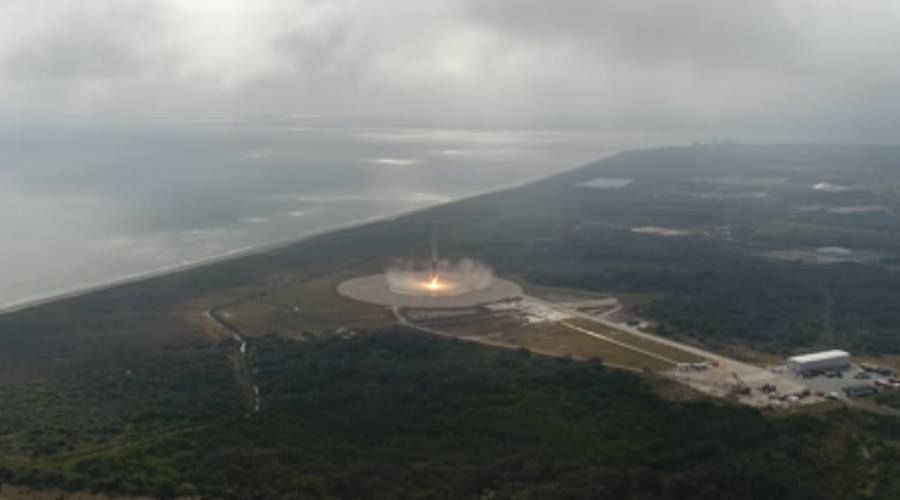Seven exoplanets in the TRAPPIST-1 system. NASA’s historic discovery
NASA announced the historic discovery in the TRAPPIST-1 system at a press conference. Seven rocky Earth-sized planets have been found there, three of which are in the ecosphere. NASA had already announced a press conference on extrasolar planets. Therefore, its launch was eagerly awaited.
Seven Earth-like planets are orbiting wokóTRAPPIST-1 star. TRAPPIST-1 is an ultracold red dwarf, whichóry is located in the constellation Aquarius about 40 light years from our solar system. This star is the size of Jupiter, but is about 80 times more massive than it.
The planets orbit very close to wokó³ of its star, but TRAPPIST-1 is not as hot as our Sun. The red dwarf is in porównaniu about half as cool as our star. The orbital period of the TRAPPIST-1 star by the closest exoplanet is 36 hours. The farthest planet orbits its star in 20 days. All seven planets would fit inside Mercury’s orbit.
Researchers believe that one side of all exoplanets is permanently zwrócone towards the star. In the event that on któeither of these planets had a thick atmosphere, heat could be transported to the eternally dark side of the planet.

Three of the worlds discoveredów are orbiting in the ecosphere. This zone wokó³ stars, in whichórej there are conditions conducive to keeping water in a liquid state. Theoretically, life could exist on such planets. Two spród of the seven discovered exoplanets have sizes larger than Earth. The other planets are smaller.
The discovery was reported last May. However, three planets were then reported. Researchers then overlooked the other five planets. The discovery was made by a teamół astronomeróin working on the Spitzezra Space Telescope.
Researchers estimate that about 30-50 percent of the. Stars in the Milky Way are red dwarfs, similar to TRAPPIST-1. If wokól them commonly orbiting rocky planets, we can expect more similar discoveries in the future. This is due to the James Webb Space Telescope, whichóry is scheduled to be launched next year.
– Our discovery shows that finding a second Earth is not a question „Whether” only „when” – Thomas Zurbuchen, professor of aerospace engineering and sciences at the University of Michigan, said at the conference.





